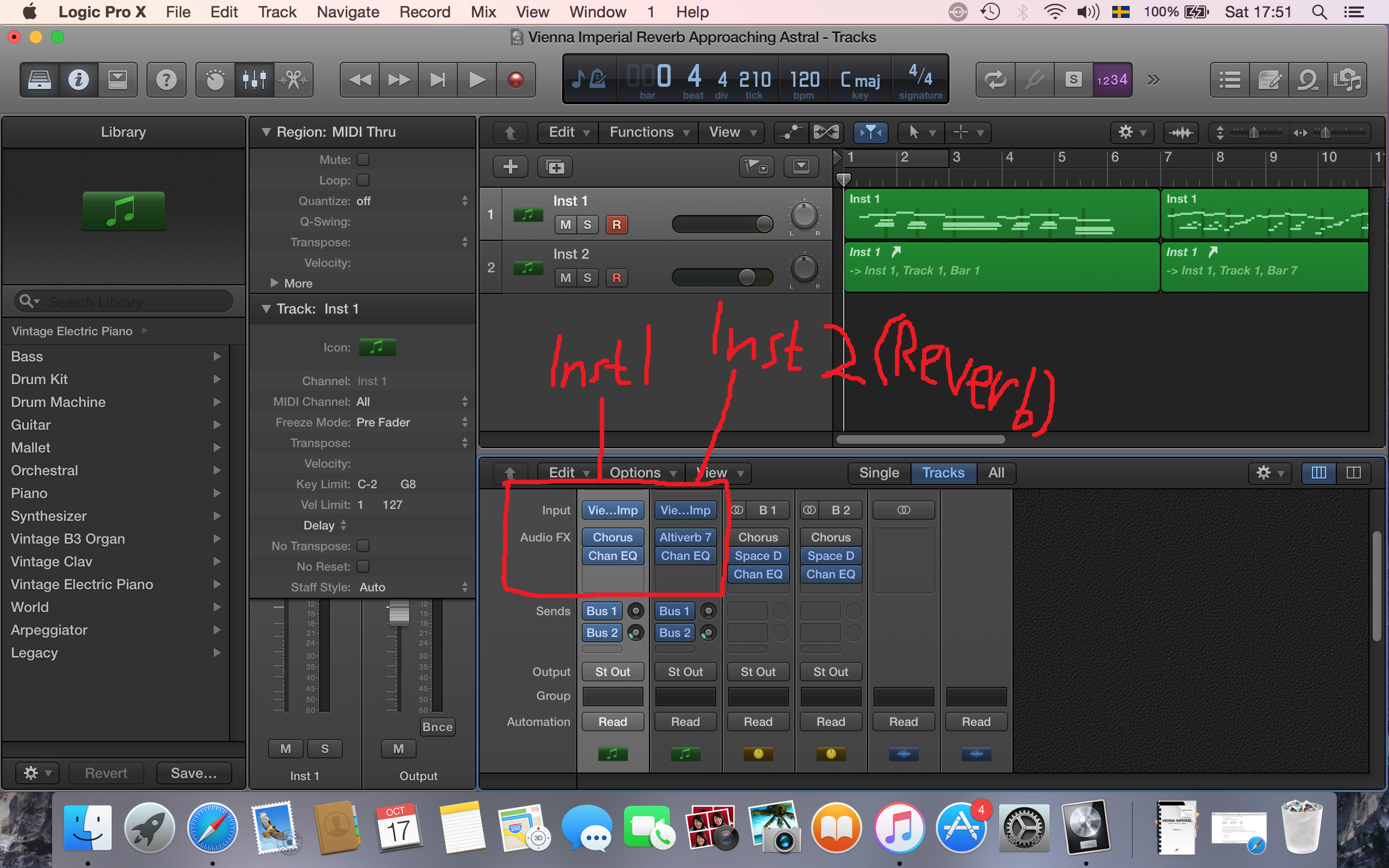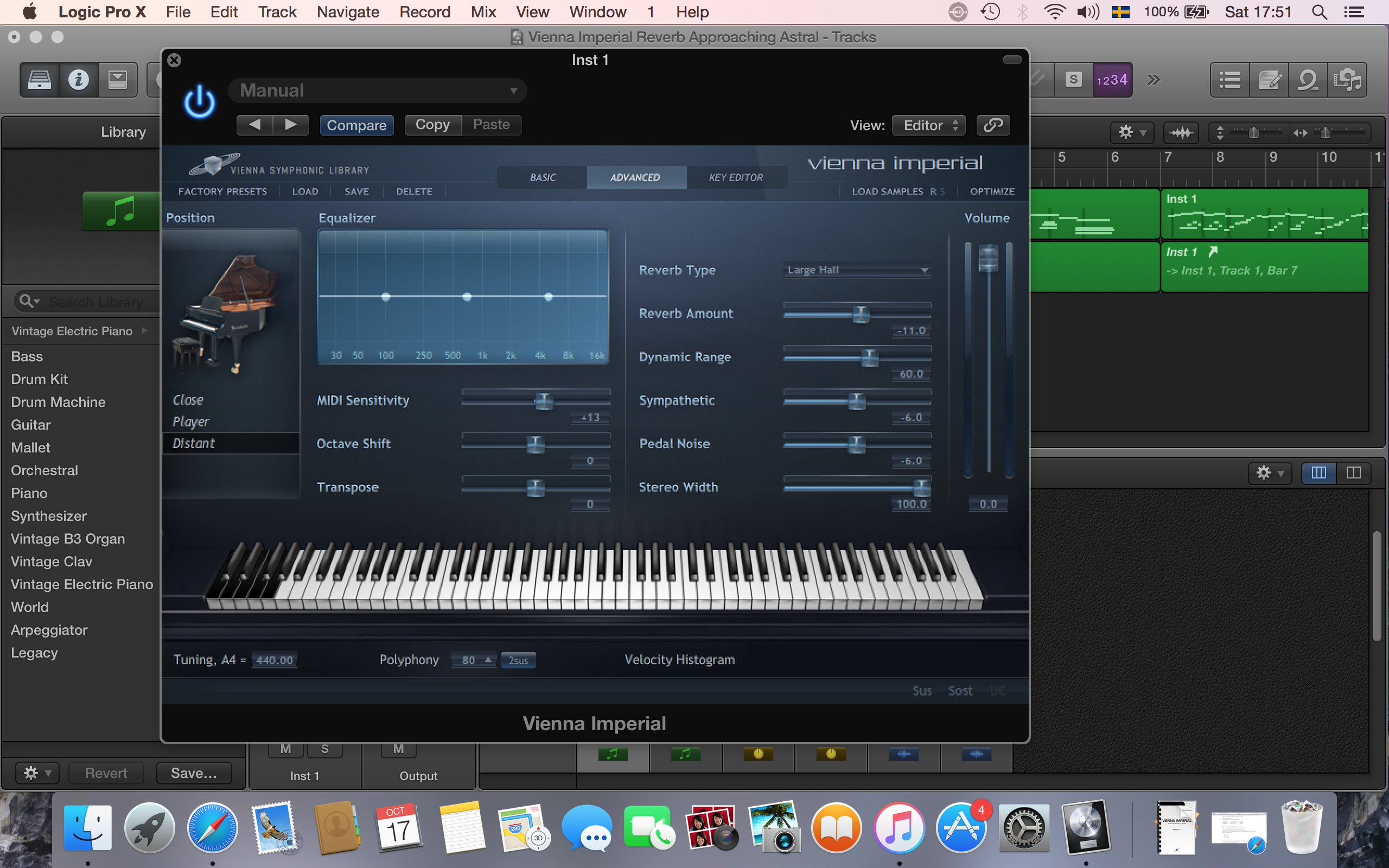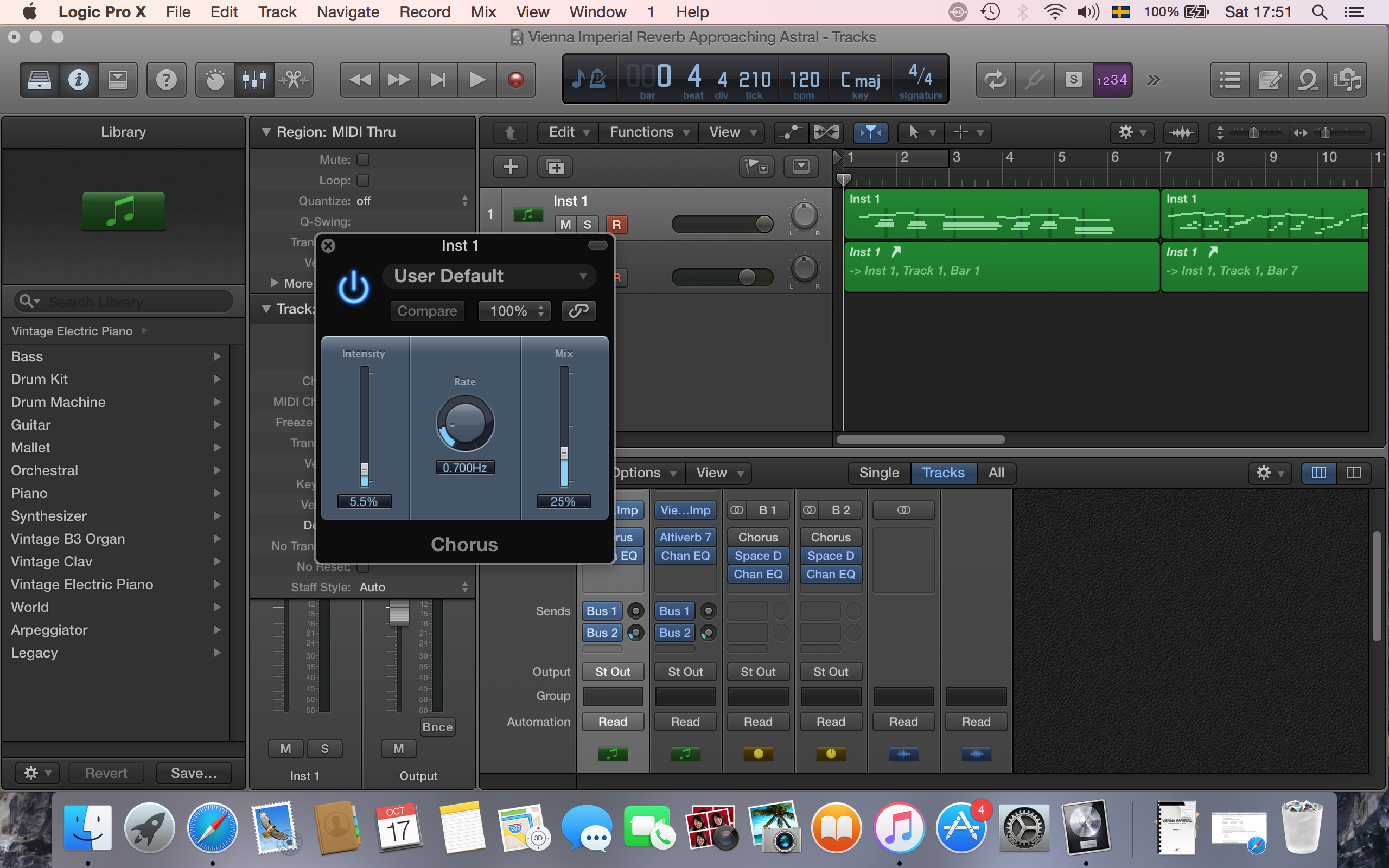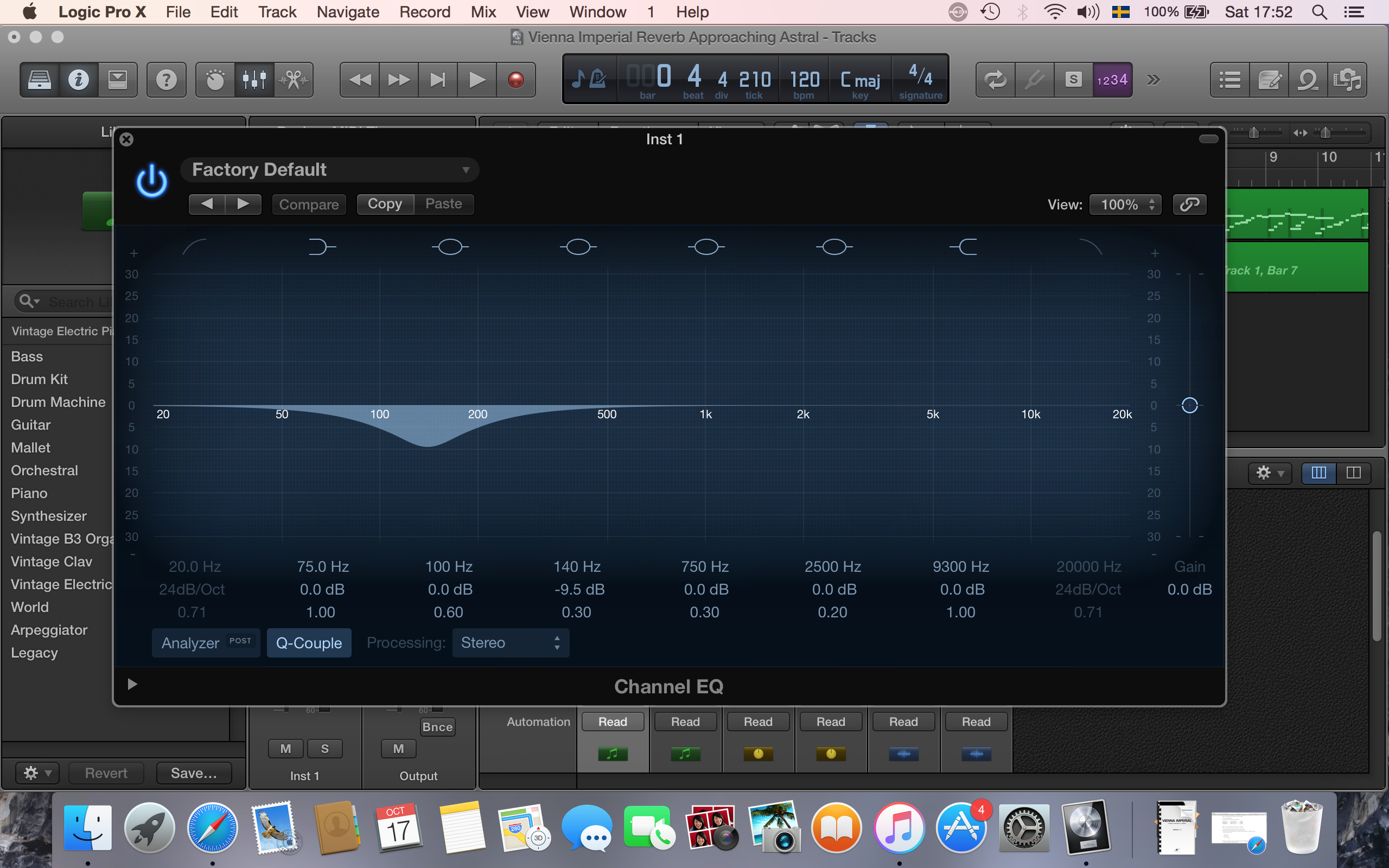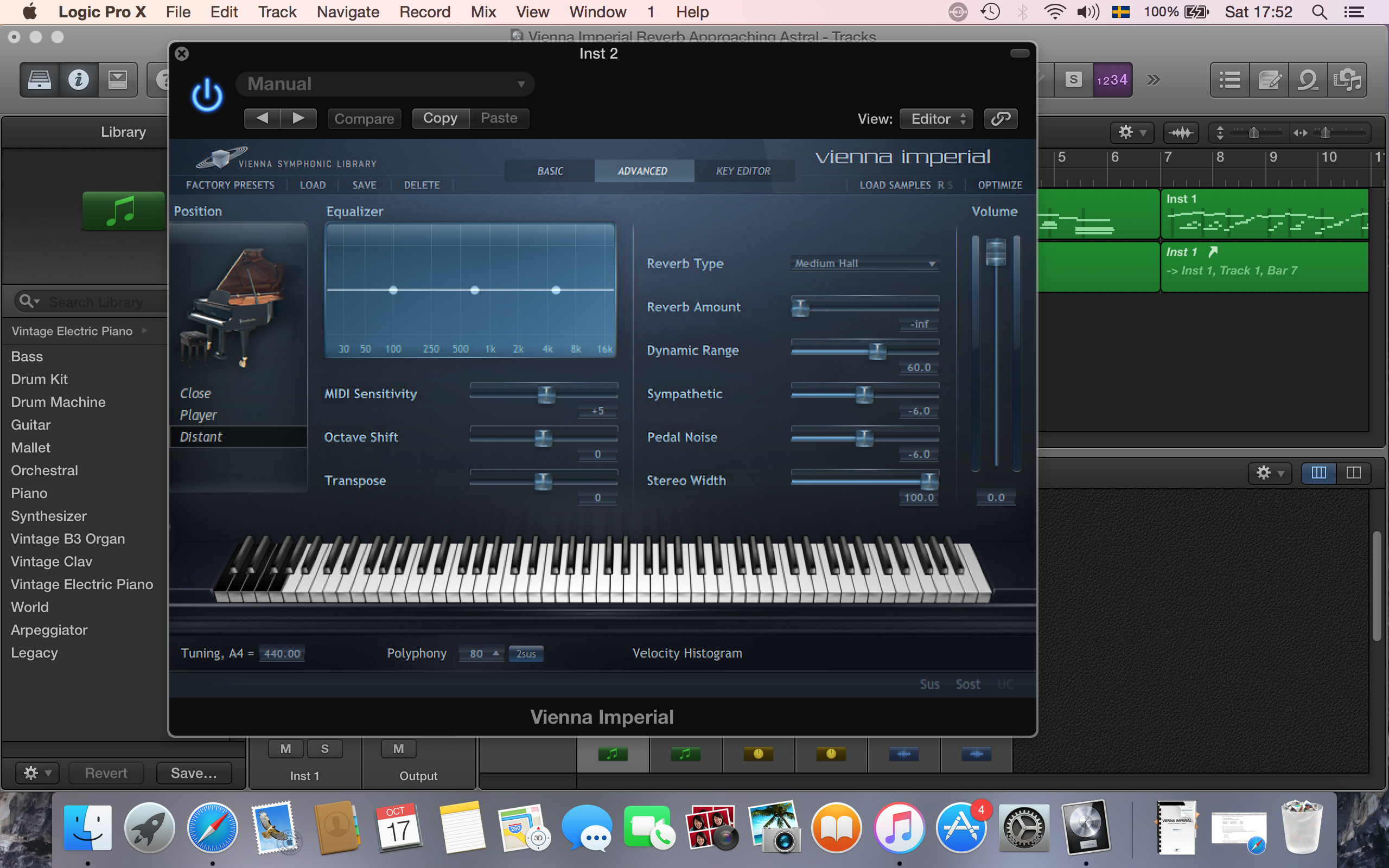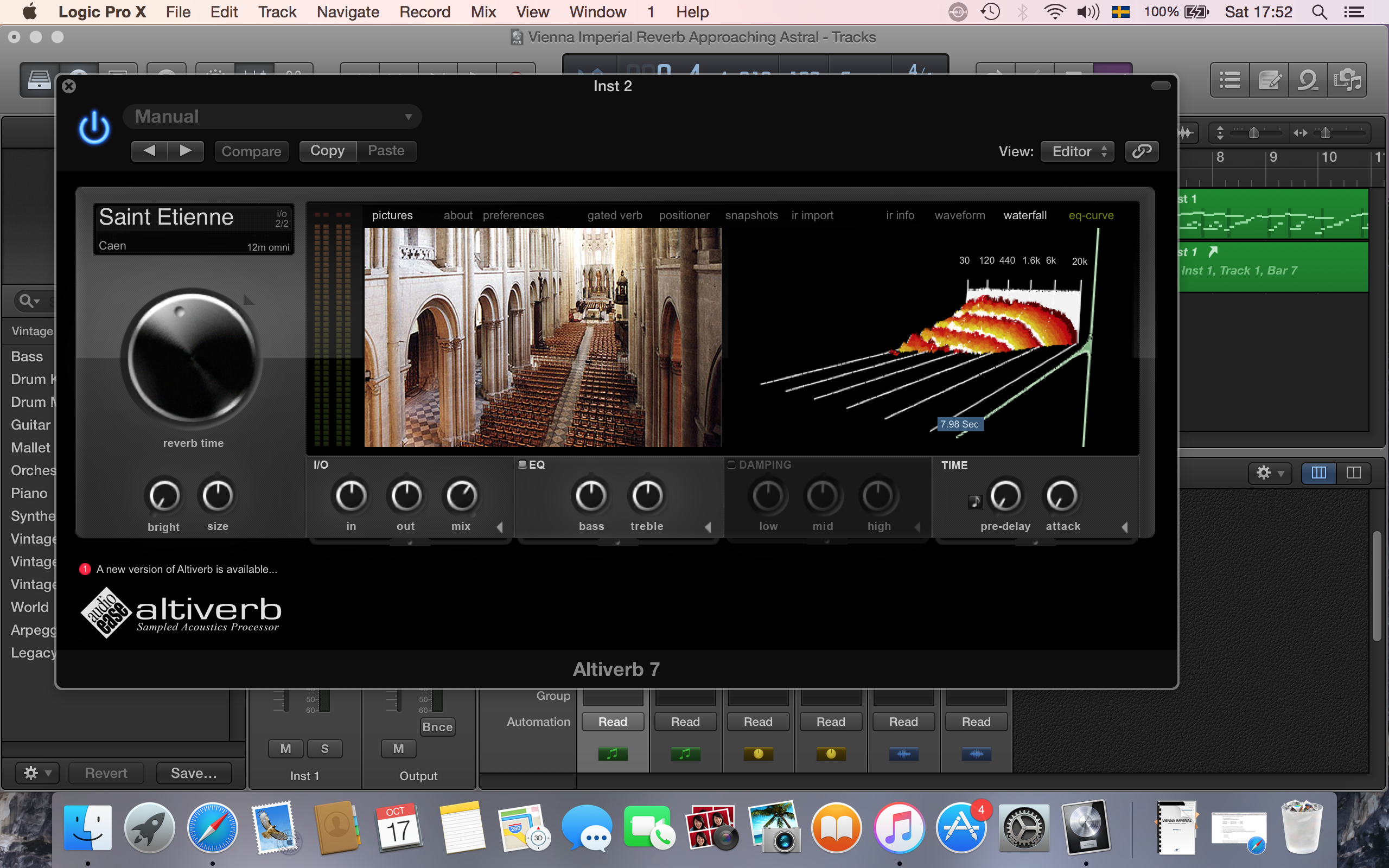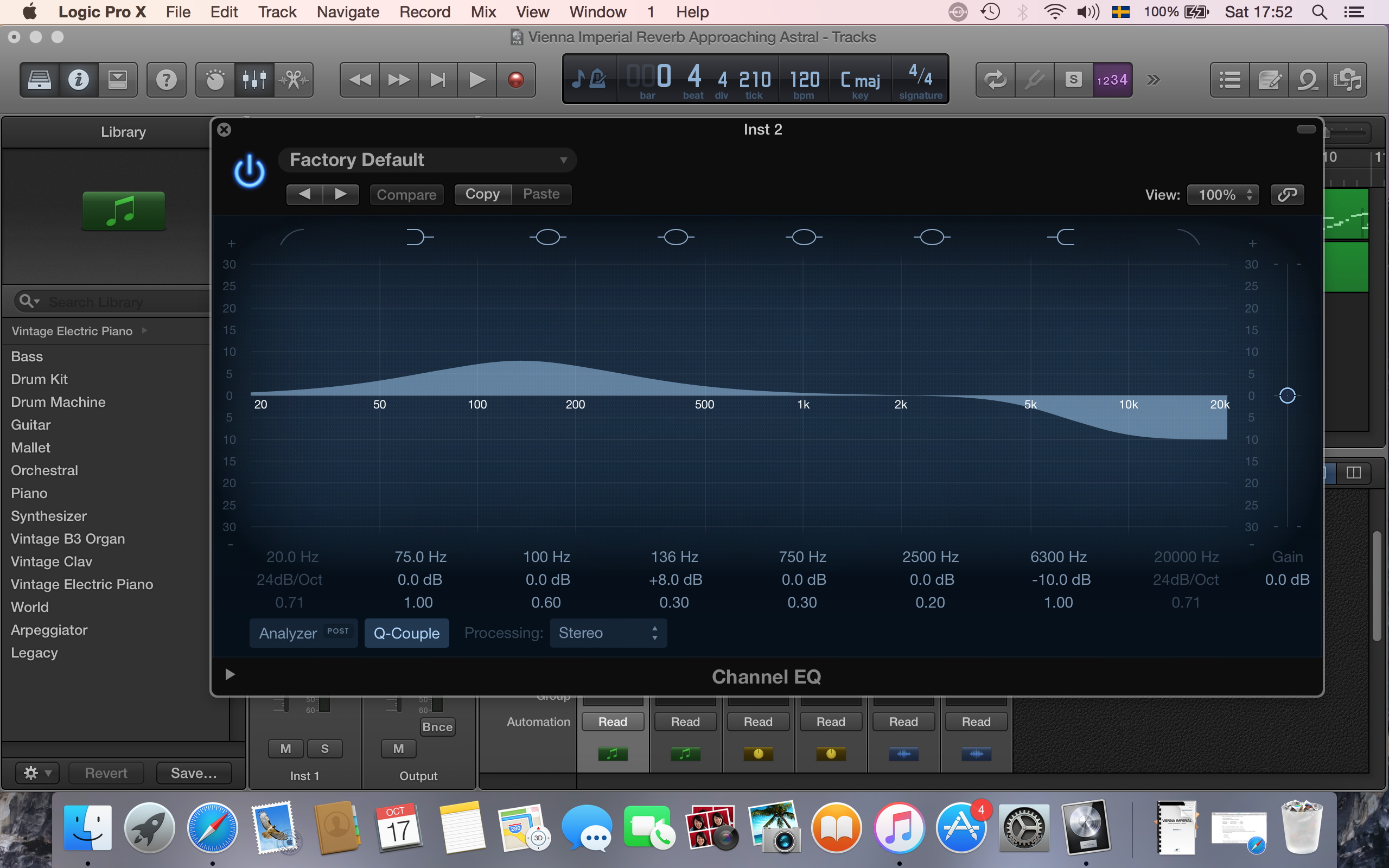/Dietz - Vienna Symphonic Library
-
I will certainly agree! Jimmy's clear and detailed answers have certainly helped me too with my projects!
I also own the Imperial, and initially, I had the same questions as you about it. One thing I learned, is when playing notes with lower velocity, it achieves a more desired sound for me. Even if I have a midi file, I find myself reducing the velocity to achieve a more realistic sound. In addition, whichever reverb you use, the dry/wet ratio is also important.
I put together a quick demo using the Imperial and MIR Pro using their latest Pernegg venue of the the same piece you like from the link you posted (I found the same midi on the web) and I had to adjust the velocities. It's not perfect, but you'll get the idea. I also use some compression, EQing, and harmonic distortion. As Jimmy said, the right effects can make a difference in achieving this type of sound.
-
Thank you for taking your time putting together that demo!
I agree with you that reducing velocities can sometimes result in a more desireable and perhaps modest sound. Yes, balancing the reverb is also important. It can quite easily get overwhelming.
_________________________________________________________________________________________________________
Since my last post I've quite exhausted myself adjusting different sliders and knobs pertaining to everything between convolution and algorithmic reverbs to EQ levels and chorus settings. What I've ended up with is certainly something quite closer than I've managed before. Still I'm not quite satisfied with the result yet and I'm sure there are more adjustments and fine-tuning that could be done.
Below I've attatched some images that illustrate the things I have done.Instruments Overview
This picture shows the two Vienna Imperial instances I used in the creation of this piano sound.
I used two seperate instances because I find the reverb easier to manage this way. I can easily seperate the wet part of the piano from the more dry part and edit them individually.
Imperial 1 InterfaceThis picture illustrates my choice of settings for the ''dry'' instance of the instrument.
As you may notice though, dry isn't really the right choice of word since I've chosen to include the algorithmic reverb in this instance of the instrument.Imperial 1 Chorus
This is the chorus settings, native to Logic Pro. I chose to include them in the ''dry'' instance of the Imperial.
I didn't really take my time listening to what distinguishes the different settings such as ''intensity'' and ''rate'',
but I ended up with something that was noticable but not overwhelming. And it did add some of this ''ethereal'' feeling to the sound if you wish.
Imperial 1 EQThis is the EQ settings I chose for the ''dry'' part of the piano sound.
I chose to reduce the value between 100-200 because I found the sound to be a bit muddy and
reducing the value around that range gave the sound more clarity.Imperial 2 Interface
This is the ''wet'' part of this instrument, which, ironically, has reverb turned off.
It makes use of a convolution reverb plugin which I'll cover in the next picture.Imperial 2 Convolution Reverb
This is a beautiful cathedral which makes for my convolution reverb.
I tried to keep the ''mix'' setting at a value which made the reverb powerful without making it overwhelming.Imperial 2 EQ
This is the EQ settings for the ''wet'' piano instance.
I found that while reducing the values around the 100-200 range made the sound more clear, adding to those values, unsurprisingly, made it muddier, or in this case, mellower. I changed that particular level to get that ''warmth'' that you can hear when the low-frequency keys are pressed on the piano in the youtube-video I linked.
It also helped reduce that ''hammering'' sound that the Vienna Imperial has by default.I reduced the high-end values in the EQ settings, as JimmieHellfire suggested, for quite the same reasons.
I wanted to reduce the clarity of the sound in order to emphasize that sweeping, mellow warmth that I want to surround the clear sound in the ''dry'' instance of the Imperial.Below I have also included two sound files that demonstrate the Vienna Imperial sound with and without my edits.
Now that you have listened to the sound and looked at the images I posted, what else do you think I can do to come closer to the sound in the youtube video? I've been going forth and back between the midi sensitivites for the two instruments to find out what sounds best and closest to the piano sound in the youtube video but I haven't yet came to a final conclusion. In the pictures below are what I thought sounded best the last time I fiddled with that setting.
Once again, thanks alot! Any help is much appreciated!
-
I noticed my example had the wrong piano in the second channel. I replaced it with the correct version:
I think, for myself, I first try and get the best sound I can with just the reverb and EQ and then try adding effects -- otherwise, you'll go crazy.
-
Here's an example where I don't use ANY reverb. I am actually using a DELAY affect but I made it behave like a reverb.
So below you get just Imperial, the delay effect Replika (which costs $49 from Native Instruments), EQ, compression, and a bit of harmonic distortion. NO reverb... I was actually shocked!
-
@nektarios
I listened to the additional examples you posted.Unlike the version you posted where an actual reverb was used, the one using only a delay
seems to have a less obvious, more shimmering kind of tail to it. It's beautiul and a technique that
would be interesting to experiment with imo.In terms of mimicking the sound present in the youtube video, any of the examples either of us
have posted so far haven't really been quite on point because they lack the ''round'' and ''saturated''
depth present in the piano sound in the video.
The link I posted above directs to a part of the video where some lower frequency keys are pressed.
It's in these that this round rich sound can best be heard. It doesn't have that percussive element, just that vast depth if you know what I mean.I experimented some more yesterday night, trying to reduce that percussive feel without sacraficing clarity.
alas, I ended up sacraficing the clarity anyway and it became a flood of reverb. Still, technically I guess it was
closer to the sound in the video. I will post an MP3 of the updated version once I have tweaked with it some more.
Man, this whole project feels like a sacrilegious process. Taking a pristinely recorded Bösendorfer piano and
turning it into a run-of-the-mill special effects cluster..PS: I also experimented with adding a delay as JimmieHellfire initially suggested and I found that it did bring me a step closer to the desired result.
-
I know what you mean. Getting this type of sound is pretty tough. Since my music will dominantly feature pianos, I also want to learn on how to achieve a sound like this. Here is another attempt, using a different reverb (ArtsAcoustic), although in my case, I'd like to know how to achieve this with MIR Pro.
I also added excitement which may be overdone.
-
I contacted the guy who posted that youtube video recently about how he managed to create that particular piano sound. Yesterday I received a reply, and apparently, the only thing he used besides 8Dio's 1990 Grand Studio Piano, was some Space Design reverb native to Logic Pro..
Perhaps, after all, the most sensible option for achieving a sound like the one in the video is to purchase
a piano instrument that's intended for it.Regardless, I bought an external sound card yesterday and I'm happy with the result.
The Vienna Imperial sounds quite marvellous, especially as I have learned how to use it a bit better now,
in the way it is perhaps meant to be used. Without an orchestra of special effects.Anyway, thanks very much for the help everyone.
I will keep coming back to the thread for further discussion, provided there's any interest for that.
-
Wow, thanks for sharing this info. My gut feeling was correct, which was, they probably used minimum effects and the right reverb is half the battle. Also, looking at this piano product, I can see there is a fair amount of sound engineering that it went through. For example, choice of microphones etc. I know the Imperial can come close to this sound, and I'd love to know how to achieve this using MIR Pro as my reverb (although MIR Pro is not a really reverb according to VSL). Currently, even though I have a pleasing sound on the higher notes, my lower notes sound muffled.
